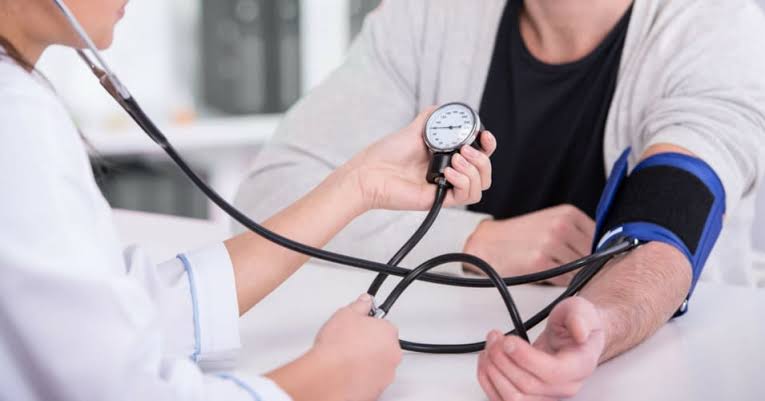Early tests and examinations help in early detection of cardiovascular disease, diabetes, and some types of cancer.
Here, we offer you a set of medical tests for early detection of dangerous diseases, which would increase the chances of successful treatment, according to a report by Vera Ermakova, published by the Good House website in its Russian version.
1- blood pressure
It is necessary to measure and monitor blood pressure regularly. After the age of 40, blood pressure measurement should become a routine procedure, and doctors recommend taking the necessary measures if blood pressure exceeds the normal level.
The American Heart Association classifies blood pressure readings as follows:
Normal blood pressure: systolic less than 120 and diastolic less than 80.Pre-morbid: systolic between 120 and 139 and diastolic between 80 and 89.Stage I hypertension: systolic 140-159 and diastolic 90-99.Stage II hypertension: systolic 160 or higher, diastolic 100 or higher.2- The level of glucose in the blood
Testing your blood sugar level regularly helps to detect pre-diabetes or type 2 diabetes in time. It is recommended to take the test at least twice a year, and to consult an endocrinologist if the indicator is above the normal range or very close to the maximum, especially if the disease runs in the family.
And the state of “prediabetes” (Prediabetes) means that the patient’s blood sugar level is lower than the diagnosed diabetes, but at the same time it is higher than the normal level, and if it is not dealt with, the person will develop type 2 diabetes within 10 years or more. less.
There are 3 tests to diagnose diabetes:Fasting glucose: It measures the level of sugar in the blood after 8 hours of fastingNormal: Less than 100 milligrams per deciliter.Pre-diabetes: 100-125 milligrams per deciliter.Diabetes: 126 milligrams per deciliter.Sugar tolerance: It measures the level of sugar two hours after drinking a special sugary drinkNormal: Less than 140 milligrams per deciliter.Pre-diabetes: 140-199 milligrams per deciliter.Diabetes: 200 milligrams per deciliter or higher.HbA1c: Measures blood sugar level over a period of 2 to 3 monthsNormal: less than 5.7%.Pre-diabetes: from 5.7% to 6.4%.Diabetes: 6.5% or higher.3- cholesterol level
High cholesterol levels double the risk of stroke, heart attack, kidney disease, and poor circulation in the legs. Since cholesterol is an asymptomatic disease, it can only be detected by a blood test, so it is recommended to measure your cholesterol level at least once a year.
Here are the cholesterol and lipid tests in the blood and their readings:
1- Total cholesterol in the blood: It is recommended that its level be less than 200 mg/dL, because its high is associated with health risks such as atherosclerosis and heart disease.
2- Good cholesterol: It is also known as high-density lipoprotein (HDL), and this type is good because it transports cholesterol from the body’s organs to the liver, which disposes of it, and it is recommended that the level of this type of cholesterol be more than 40 mg/dL, preferably 60 mg/dL or higher.
3- Bad cholesterol: It is also known as low-density lipoprotein (LDL), and this type is bad because it leads to the accumulation of cholesterol on the walls of the arteries, which leads to hardening and causes heart disease, and it is recommended that its level be less than 100 mg / dL.
4- Triglycerides: It is a type of fat found in the body, and its main source is food, and the liver is what converts fats into triglycerides, and its high percentage is associated with health risks, so it is recommended that its level be less than 150 mg / dL.
4 – mammogram
Women who have reached the age of 40 are advised to undergo regular breast examinations annually in addition to screening of the mammary glands by mammography. After the age of 50, this test is recommended every two years. An annual breast ultrasound is also recommended if women in the family have a history of breast cancer or if the woman has dense glandular tissue.
5- colonoscopy
Colonoscopy is one of the tests that reveal whether there are changes or abnormalities in the colon and rectum, and it is recommended that it be done once every 10 years after the age of 45. Generally, this procedure helps detect irritated and swollen tissues, ulcers and polyps, as well as early forms of rectal cancer.
6- Lung cancer screenings
In the early stages, when the chances of successful treatment are high, lung cancer has no obvious symptoms, and the only way to detect it is with an annual CT scan. These checks are especially important for smokers, as well as for people over 55 years old. Because conventional radiography does not provide complete information, doctors recommend a CT scan.
7- Skin cancer screenings
It is advisable to perform a complete examination of the skin, including the scalp, to detect the presence of any suspicious spots or moles that could indicate skin cancer.

